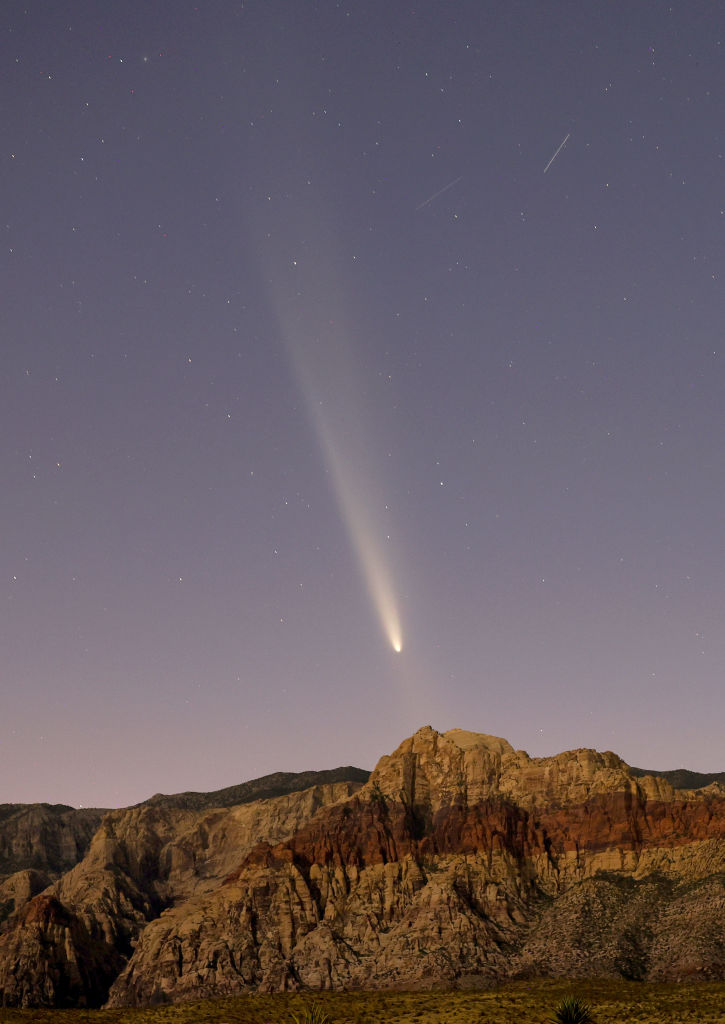
Comet C/2023 A3 has had "pretty long journey around the sun," Aoraki told RNZ's Nights.
"It's a comet that we call a long-period comet. Any comet that has an orbital period around the Sun for longer than 200 years. We're not going to see this specific comet again essentially."
The best time to see it with the naked eye is likely to be in the next few days, Aoraki said.
On Tuesday night, he captured the comet on his camera.
"It kind of looks like a slightly brighter, fuzzier patch of the sky. It was still extremely low, so it's almost impossible to see. You couldn't see it with the naked eye."

"As we go through the week, it's going to get higher into the sky, which is a good thing, but as it does, it's actually moving away from the sun, so it's starting to lose its brightness.
"It's getting dimmer as we go into the week, although it's also getting higher at the same time."
A full moon on Friday also complicates things, he said.
"That kind of kind of washes out the sky. It's going to make this comet a lot harder to see."
So, if you want to see Comet C/2023 A3 get yourself an unobstructed view of the western horizon, he said.
"If you live on the West Coast, you can get up to the beaches that are looking directly west, that's going to be your best bet, because it's still quite low, and you just need as much of a window to see it as possible, which is about an hour after sunset."
This comet comes originated the outer part of the solar system, a place called the Oort Cloud, astronomer Ian Griffin told Morning Report on Tuesday.
The comet's tail is the ice encasing it burning off, he said.
"It's a dirty snowball, the sun broils away all of the ice and creates this amazing tail that hopefully we'll see over the next few weeks.
"Very exciting. I think astronomers across the world are going to enjoy this comet, and I'm certainly going to be looking out for it over the next few evenings."













